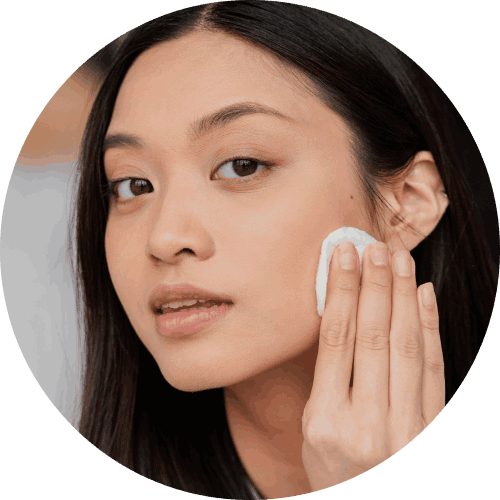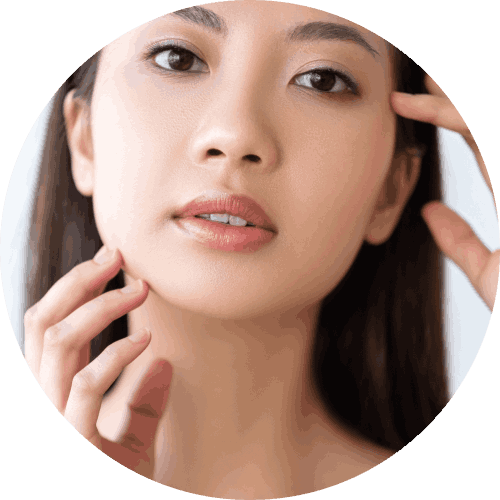Published on March 7th, 2024
Last updated on March 7th, 2024
Is Korean or Japanese Skincare Better?

In recent years, the Asian beauty routines have gained immense popularity worldwide. It’s due to their effectiveness and innovation.
Both countries have unique approaches to care. Each has its own set of philosophies, ingredients, and techniques. With such a vast array of items flooding the market, it can be challenging to determine which care regimen is better.
In this “Japanese vs. Korean skincare” article, we’ll delve into the differences between the approaches. And we will explore which might be more beneficial for various dermis types and concerns.
Japanese vs. Korean Skincare: Difference
Two regimes stand out as influential pillars in the realm of beauty. Each offers distinctive philosophies and products. They both emphasize meticulous care and innovation. However, J-skincare often champions simplicity and tradition. It focuses on gentle formulations and time-tested rituals.
Conversely, K-skincare thrives on innovation. It boasts multi-step routines and a fervent embrace of cutting-edge ingredients. Unveiling the nuances of two approaches illuminates the diverse landscape of practices.

Cultural Influences
It’s hard to say whether Korean or Japanese skincare is better. However, the second one is deeply rooted in tradition and simplicity. It emphasizes natural ingredients like rice bran, green tea, and seaweed. It’s often inspired by ancient beauty rituals. This approach focuses on gentle cleansing, hydration, and protection from environmental stressors.
On the other hand, K-skincare is popular for its multi-step routine. It’s known as the “10-step routine.” This method involves multiple layers of products. They’re cleansers, toners, essences, serums, and sheet masks. This care places a strong emphasis on achieving a clear, bright complexion.
Ingredients
J-skincare products typically feature minimalist formulas. They’re with a focus on purity and efficacy. Sake, camellia oil, and yuzu are commonly used. It’s for their antioxidant and hydrating properties. The brands prioritize gentle formulations suitable for sensitive dermis types.
According to our “Japanese vs. Korean skincare” guide, the K-products often incorporate a diverse range of innovative ingredients. They’re snail mucin, bee venom, and fermented extracts. These ingredients can address specific care concerns. It includes hydration, brightening, and anti-aging. The brands are popular for their research and development efforts. They continuously introduce cutting-edge ingredients and technologies.
Texture and Packaging
J-skincare products tend to have lightweight textures and minimalistic packaging. It reflects the aesthetic of simplicity and elegance. Many brands prioritize simplicity in both their formulations and packaging. It focuses on functionality and ease of use.
According to our “Korean vs. Japanese skin care products” guide, K-items often feature more elaborate packaging with vibrant colors and playful designs. The texture of K-skincare products can vary widely. They range from lightweight gels to rich creams. They cater to diverse preferences and dermis types. Brands place a strong emphasis on creating appealing and enjoyable-to-use products. It contributes to the overall experience of care rituals.
Korean vs. Japanese Skin Care Products
The realms of the two countries’ offerings showcase unique formulations and approaches. K-skincare products are renowned for their innovation. They feature advanced ingredients and multi-step routines aimed at achieving a flawless complexion.
Conversely, J-items focus on simplicity and efficacy. They often incorporate traditional ingredients and focus on gentle, nourishing formulas. Understanding the difference unveils a spectrum of choices catering to diverse needs.
Hydration
According to our “Japanese vs. Korean skincare” guide, both approaches place a significant emphasis on hydration. It’s a fundamental aspect of healthy dermis. J-hydrating products often feature lightweight textures. They absorb quickly into the dermis, delivering moisture without heaviness or greasiness. Toners, known as “lotions” or “essences,” hydrate and prep the dermis for the next layers.

In K-skincare, hydration is achieved through multiple layers of products. It includes toners, essences, serums, and moisturizers. The “7 Skin Method” is a popular technique. It involves applying many layers of hydrating toner to the dermis to boost moisture levels. K-hydrating products often contain ingredients like hyaluronic acid and glycerin. It’s to attract and retain moisture, leaving the dermis plump and dewy.
Brightening
According to the “Is Korean or Japanese skincare better” block, both care offer solutions for achieving a brighter, more radiant complexion. J-brightening products often contain vitamin C derivatives, arbutin, and licorice extract. It’s to fade dark spots and even out dermis tone. J-skincare routines focus on gentle exfoliation. It promotes cell turnover and reveals fresh, luminous dermis.

In Korea, brightening is achieved through a combination of ingredients. They’re niacinamide, vitamin C, and alpha hydroxy acids (AHAs). Their brands offer a wide range of brightening serums, ampoules, and sheet masks. They’re formulated to target hyperpigmentation and dullness. The multi-step care routine ensures brightening ingredients are delivered effectively and consistently. It results in a more radiant complexion over time.
Anti-Aging
Both Korean vs. Japanese skin care products place a strong emphasis on anti-aging solutions. It’s to maintain a youthful, healthy-looking dermis. J-anti-aging products often focus on prevention and protection. They incorporate ingredients like green tea extract, collagen, and retinol. It’s to boost dermis elasticity and firmness. The care rituals prioritize sun protection and lifestyle factors to prevent premature aging.

In Korea, anti-aging products are abundant. They range from targeted treatments like serums and ampoules to nourishing creams and sleeping masks. The brands harness the power of innovative ingredients like peptides, stem cells, and growth factors. It’s to address fine lines, wrinkles, and loss of elasticity. The multi-step care routine allows for the layering of multiple anti-aging products. It delivers comprehensive care to combat signs of aging effectively.
Conclusion
In conclusion of our “Japanese vs. Korean skincare” guide, both routines offer unique approaches. It’s to achieve a healthy, radiant dermis. J-skincare emphasizes tradition, simplicity, and natural ingredients. K-skincare is characterized by innovation, multi-step routines, and cutting-edge technologies. The choice between care ultimately depends on:
- Individual preferences.
- Dermis concerns.
- Lifestyle factors.
Experimenting with products from both cultures can help you discover the best skincare routine for your needs. It incorporates the benefits of both care philosophies.
FAQ
Which country’s skincare is better for my dry skin?
Korean and Japanese skincare offers effective solutions for dry skin. They focus on hydration and nourishment. Japanese skincare products tend to have lightweight textures and gentle formulations. They’re for sensitive skin, making them ideal for those with dry, sensitive skin. Korean skincare can also benefit dry skin types. It’s done by providing layers of moisture and nourishment.
How do I introduce these new products to my routine?
It’s essential to start slowly and observe how your skin reacts. Do a patch testing of new products on a small area of skin. It can help identify any potential sensitivities or allergic reactions. Gradually incorporate one new product at a time. Allow your skin to adjust before introducing additional products. Pay attention to how your skin looks and feels. And adjust your routine accordingly based on your skin’s needs.
What products are gentle enough for sensitive skin?
Both Korean and Japanese skincare offer a wide range of products suitable for sensitive skin types. Look for gentle cleansers free of harsh sulfates and fragrances. Opt for soothing toners with hydrating ingredients like hyaluronic acid and aloe vera. And use lightweight moisturizers that provide ample hydration without clogging pores. Avoid products with alcohol, artificial fragrances, and potential irritants. And opt for formulations specifically designed for sensitive skin.

